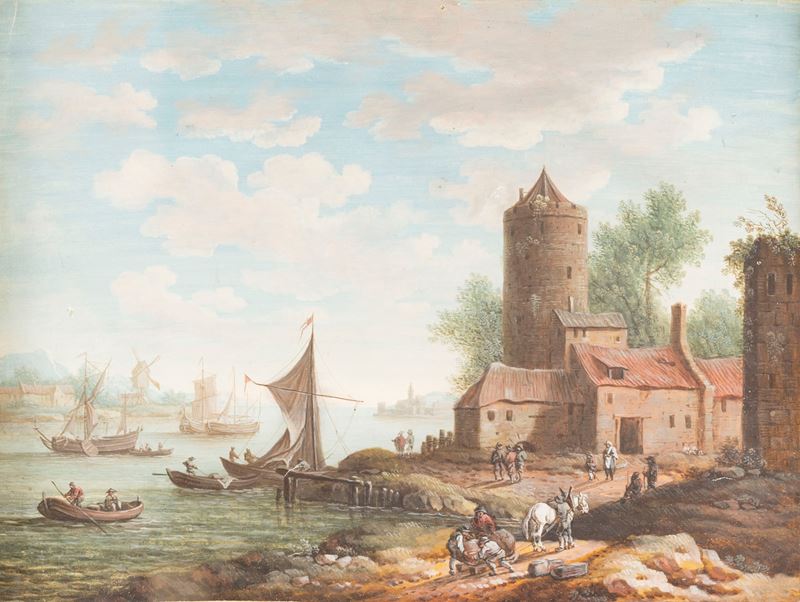Information
167 x 225 mm
on the reverse ancient inscriptionLe Chevalier van de Werve / d'Anverse a fach ech tablau and, bottom left, date 1718
The refined gouache offered in the lot presents on the reverse a reference to the Chevalier van der Werff, an expression often used to indicate the Dutch painter Adriaen van der Werff (1659-1722). The indication is certainly suggestive but the work does not seem stylistically attributable to the hand of this artist. Significant is, however, the comparison with the gouache which appeared on the English market in 2022 (Sotheby's London, 6 July 2022, lot 123) with the attribution to Henri Desiré van Blarenberghe, a work which, due to its quality, style and composition, is most likely to be attributed to the same unknown author as ours. The Sotheby's sheet bore the inscription on the reverse Ditch fecet Nurmberg and another, later, Francis Paul Ferg / 1689-1738; the first probably refers to an artist from the Dietzsch family of Nuremberg, the second to the Austrian landscape painter Franz de Paula Ferg (1689- 1740). The reference to Ferg does not seem relevant, while some similarities with the production of Johann Christoph Dietzsch (1710-1768) are highlighted, although not so compelling as to allow us to propose an attribution to this master. In any case, both of the two inscriptions rightly suggest that he is a German artist of the 18th century. In particular, it can be hypothesized that the author of our gouache was active in Frankfurt am Main since the strongest stylistic relationship is found with the pictorial corpus of three painters active in this city: Christian Georg Schütz I (1718-1791), his son Christian Georg Schütz II (1758-1823) and his brother-in-law Franz Hochecker (1730-1782), whose works are often confused.
Contact
Condition report
Suggested lots
Caricamento lotti suggeriti...
More Lots













